In the cryptocurrency market, 3000 yuan is about 440 U. I’ll propose an executable plan. If you can carry it out, turning 3000 yuan into 1 million is achievable.
From 2024 to 2025, I turned 100,000 into approximately 42 million. I have a rather silly but practical cryptocurrency trading method that allows you to 'always profit'! I started with 100,000, made a profit of 10 million, then went into debt of 8 million, and finally made a profit of 42 million, achieving financial freedom. Over the last two years, from 2024 to 2025, I managed to achieve a return of 418134.86% with less than 200,000.
Here are some practical and useful suggestions for newcomers to the cryptocurrency world! My trading method is very simple and practical; I turned a six-figure amount into 8 digits in just one year, relying on 11 chart patterns to seize opportunities. I only enter when there’s a clear pattern and have maintained a win rate of over 90% for five years!
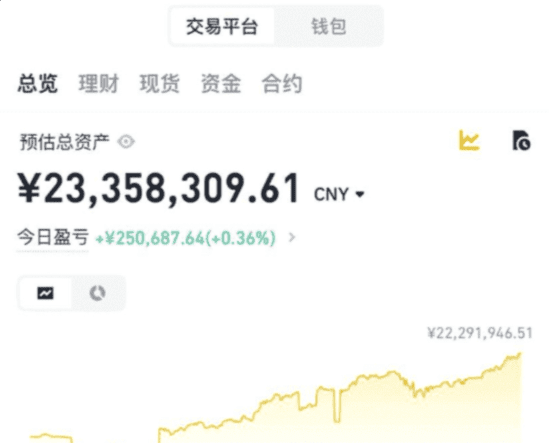
I spent 5 years reviewing 400 charts every night, turning 110,000 into 18 million, relying solely on 11 chart patterns, achieving a win rate of 100%, winning every battle. Through my own practice, my win rate has also reached 100%. I have compiled this over the past few days and now share it with those destined to learn and master it; it's worth keeping!
1. Cup and Handle Pattern:
The cup and handle pattern is an adjustment pattern after a strong rise in the cryptocurrency. Generally, a cryptocurrency will experience intense fluctuations for about 2 to 4 months, and then through market adjustments, it will encounter sell-offs and decline about 20% to 35% from the previous high. The adjustment period is usually between 8 to 12 weeks, depending on the overall market condition. When the price of the cryptocurrency rises and attempts to challenge the previous high, it will face selling pressure from those who bought at or near the previous high. This selling pressure will cause the price to decline and consolidate, typically lasting about 4 days to 3 weeks. The handle part is usually about 5% lower than the previous high, and if the handle is lower, it usually indicates a defective cryptocurrency, which means a higher risk of failure.
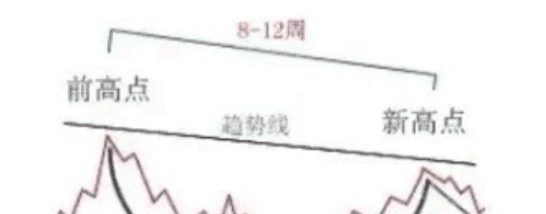
The buying opportunity for this cryptocurrency is when it rises to a new high at the top of the handle, not when it touches the previous high point 8 to 12 weeks ago. This is one of the best and most reliable patterns; it’s worth noting that the best stocks with this pattern usually appear at the beginning of the market trend after a sufficient correction, not during or at the end of a significant market surge.
2. Flat Bottom:
A flat bottom is a chart pattern that moves horizontally over any time span. This pattern can lead to very strong upward movements. We are looking for situations where the cryptocurrency price stays at a horizontal or roughly the same level, and trading volume diminishes. Draw a trendline at the top of this flat bottom; buy when the price breaks through the trendline and the volume increases. The buying opportunity for this cryptocurrency is when it rises to a new high at the top of the handle, not when it hits the previous high point 8 to 12 weeks ago. This is one of the best and most reliable patterns; it’s worth noting that the best stocks with this pattern usually appear at the beginning of the market trend after a sufficient correction, not during or at the end of a significant market surge.
2. Flat Bottom:
A flat bottom is a chart pattern that moves horizontally over any time span. This pattern can lead to very strong upward movements. We are looking for situations where the cryptocurrency price stays at a horizontal or roughly the same level, and trading volume diminishes. Draw a trendline at the top of this flat bottom; buy when the price breaks through the trendline and the volume increases.
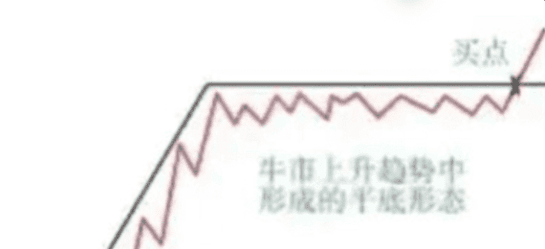
3. Ascending Triangle:
The ascending triangle is a variant of the symmetrical triangle, usually considered the most reliable bullish pattern in an uptrend. The top of the triangle is flat, while the bottom slopes upward.
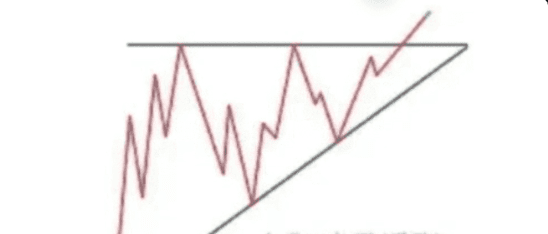
In an ascending triangle, stocks are overbought, and the price reverses and declines. Then, buying returns to the market, and the price quickly reaches a historical high. After reaching the peak, it falls again. Buying will reappear, although the price will be higher than before. The price eventually breaks through the previous point, and with new buying, the price is pushed higher. In the case of a symmetrical triangle, the breakout is usually accompanied by a significant increase in trading volume.
4. Parabola:
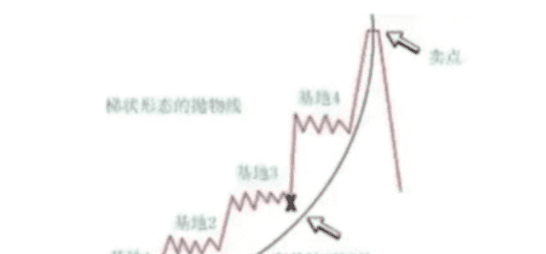
The parabolic pattern may be one of the most esteemed and sought-after patterns. This pattern can yield maximum and quickest returns in the shortest time. Generally, you will find such patterns at the end of a major market uptrend or close to its end, and this pattern is the final result of breakthroughs formed after multiple bases.
5. Wedge:
The formation of a wedge also resembles a symmetrical triangle because the trendlines intersect at their peak; however, the distinction of the wedge lies in its apparent tilt, with both sides sloping. As with triangles, trading volume should decrease during the formation of the wedge and increase during its breakout. Below is a typical wedge trend pattern:
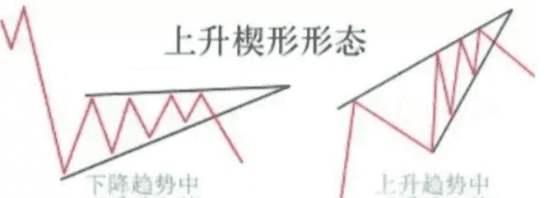
A descending wedge is generally considered bullish, usually appearing in an uptrend. However, it can also occur in a downtrend, but it still means that overall it is bullish. This chart pattern consists of a series of lower highs and lower lows.
An ascending wedge is generally considered bearish, usually appearing in a downtrend. They can also be found in an uptrend, but are still generally viewed as bearish. An ascending wedge consists of a series of higher highs and higher lows.
Channel:
Channel patterns are generally considered continuation patterns. They are zones of indecision, typically moving in the direction of the trend. Of course, trendlines move parallel within the rectangular area, representing a near balance of supply and demand at present. Buyers and sellers seem evenly matched, with the same 'high points' constantly being challenged, and the same 'low points' also being persistently challenged, with the currency oscillating between two clearly defined parameters. Although trading volume does not seem to be as affected as in other patterns, volume typically decreases during the pattern, but, like other currencies, it should significantly increase during the breakout.

7. Symmetrical Triangle:
A symmetrical triangle can be described as a zone of indecision, where the market stagnates, and the future direction is questioned. Typically, the supply and demand forces at that time are considered nearly equal.
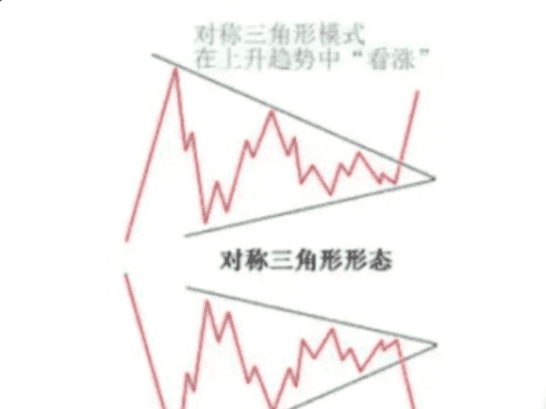
The buying pressure driving the price up quickly encounters selling pressure, and the price decline is seen as a buying opportunity. Each new lower high and higher low becomes narrower, forming the shape of a sideways triangle. (During this period, trading volume tends to decrease.) (Typically in the context of huge trading volume). Ultimately, this indecision will end, usually starting a breakout from this pattern. Research shows that symmetrical triangles overwhelmingly reverse in the direction of the trend; in my opinion, symmetrical triangles are very useful chart patterns and should be traded as continuation patterns.
8. Descending Triangle:
The descending triangle is also a variant of the symmetrical triangle, usually considered bearish and typically appearing in a downtrend.
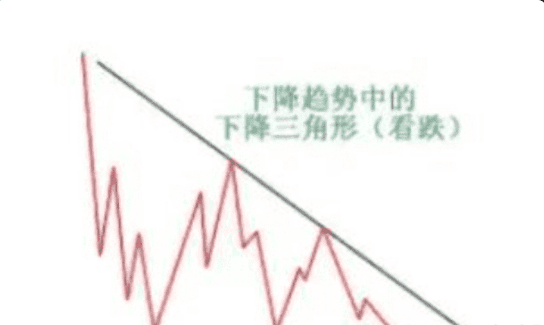
Unlike the ascending triangle, the bottom of this triangle appears flat. One side of the triangle's top slopes downward. The price will drop to an oversold level, then tentative buying appears at the low point, causing the price to rise.
However, higher prices attract more sellers, and the price constantly challenges lower points. Next, buyers tentatively re-enter the market, but as prices rise, more sellers are attracted again. Ultimately, sellers take control, breaking below the previous lower points, while previous buyers rush to sell their positions. Like symmetrical and ascending triangles, trading volume continuously decreases during the formation of the pattern until it expands at the breakout.
9. Flags and Pennant Patterns:
Flags and pennants can be classified as continuation patterns; they usually represent a brief pause in dynamic currencies and typically occur after a rapid surge. Currencies usually rise again in the same direction. Research indicates that these patterns are relatively reliable continuation patterns.
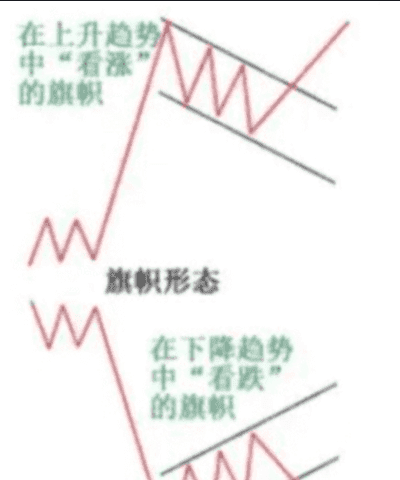

1. The characteristics of a bullish flag are lower highs and lower lows, with the tilt direction opposing the trend. However, unlike wedge lines, their trendlines are parallel.
2. Bearish signals consist of higher highs and higher lows, and the 'bear market' flags also have an opposing trend tilt. Their trendlines are also parallel. Pennants resemble symmetrical triangles, but pennant patterns are usually smaller in size (volatility) and duration, with volume typically contracting during stagnation and expanding during breakouts.
10. Head and Shoulders Shape:
The head and shoulders pattern is generally considered a reversal pattern, appearing in an uptrend as the most reliable. Eventually, the market begins to slow down, and the forces of supply and demand are generally considered balanced.

The seller sells at the high point (left shoulder) and begins a tentative decline. Buyers quickly return to the market and ultimately push the price to a new high (head). However, the new high soon retracts, and it will again undergo a downward test (neckline continuation). Tentative buying reappears, and the market rebounds again, but fails to break the previous high. (The last peak is considered the right shoulder.)
Trading volume in the head and shoulders pattern is very important; volume generally follows the price increase of the left shoulder. However, the head forms under decreasing volume, indicating that buyers are no longer as aggressive as before. The volume on the right shoulder is even smaller than on the head, suggesting that buyers may be exhausted. New sellers enter, and previous buyers exit. When the market breaks through the neckline, the chart is complete (volume increases at the breakout).
11. Inverted Head and Shoulders:
The head and shoulders chart pattern can sometimes be inverted; the inverted head and shoulders pattern usually appears in a downtrend, and it is notable in terms of trading volume.
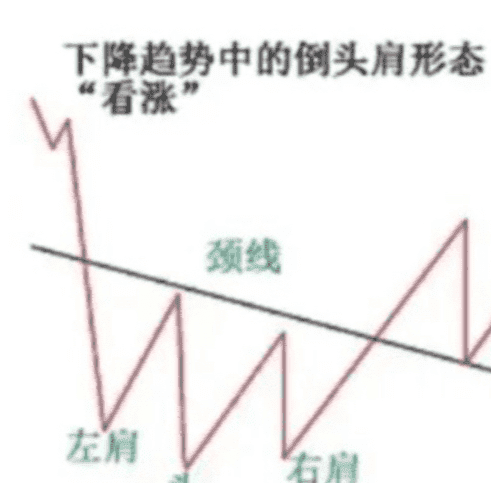
1. The inverted left shoulder should be accompanied by an increase in trading volume.
2. The inverted head should form with smaller trading volume.
3. However, the rebound from the head should show greater trading volume than from the left shoulder.
4. The trading volume of the inverted right shoulder should be the smallest.
5. When the price of the currency rebounds to the neckline, trading volume should increase significantly. New buyers enter, and previous sellers exit.
When the market breaks through the neckline, the chart is complete. (Volume increases at the breakout.)
In the early years of trading, like many people, I stayed up late every night staring at the charts, chasing highs and lows, losing sleep. Later, I gritted my teeth and stuck to a simple method, and surprisingly, I survived and gradually started stabilizing my profits.
Looking back now, this method, although simple, is effective: 'If I don’t see the signals I’m familiar with, I won’t act decisively!'
It's better to miss an opportunity than to make random trades. Sticking to this ironclad rule, I can now stabilize my annual returns at over 50%, and I finally don't have to rely on luck to survive.
Here are a few risk management suggestions for novices, based on my own experience of losses:
1. Make trades only after 9 PM. Daytime news is too chaotic, with various false positives and negatives flying around; the market fluctuates erratically and it's easy to get trapped. I usually wait until after 9 PM to operate; by then, the news is mostly stable, and the candlestick charts are cleaner and clearer.
2. Immediately secure profits when you earn. Don’t always think about doubling! For example, if you made 1000 U today, I suggest you immediately withdraw 300 U to your savings account and continue trading with the rest. I've seen too many people who 'made three times but wanted five times' only to lose everything on a pullback.
3. Look at indicators, not feelings. Don't trade based on feelings; that’s blind.
On your phone, install TradingView and check these indicators before trading:
· MACD: Is there a golden or dead cross?
· RSI: Is there overbought or oversold?
· Bollinger Bands: Is there a squeeze or a breakout?
At least two of the three indicators must give consistent signals before considering entry.
4. Stop-loss must be flexible. When you have time to monitor, if you make a profit, manually move the stop-loss price up. For example, if the buying price is 1000 and it rises to 1100, move the stop-loss to 1050 to secure profits. However, if you need to leave and cannot monitor, you must set a hard stop-loss of 3% to prevent sudden crashes from wiping you out.
5. Every week, I must withdraw profits; it's a numbers game! Every Friday without fail, I transfer 30% of profits to my savings account, and the rest continues to roll over. Over time, this way, my account will keep growing.
6. There are tricks to reading candlesticks.
· For short-term trades, look at the 1-hour chart: two consecutive bullish candlesticks can indicate a long position; if the market is stagnant, switch to the 4-hour chart to find a support line: consider entering when it falls near the support level.
7. Be careful not to fall into these traps! · Don’t leverage over 10 times; beginners should keep it within 5 times. Avoid dog coins, meme coins, and other altcoins; they are easy to get wrecked.
You can make a maximum of 3 trades a day; too many can lead to loss of control. Absolutely do not leverage beyond 10 times; beginners should control it within 5 times. Don't touch dog coins or meme coins, they are easy to get wrecked.
Lastly, let’s talk about something heartbreaking.
In the cryptocurrency market, there is no guaranteed strategy, only probability games. The essence of the pullback confirmation rule is to use rules against human nature—stay calm when others panic, and restrain yourself when others are euphoric.
Playing around in the cryptocurrency market is essentially a battle between retail investors and institutional investors. If you don’t have cutting-edge news or first-hand information, you can only get cut!
Still saying, if you don’t know what to do in a bull market, click my avatar to follow me for free shares on spot trading and contract trading.
